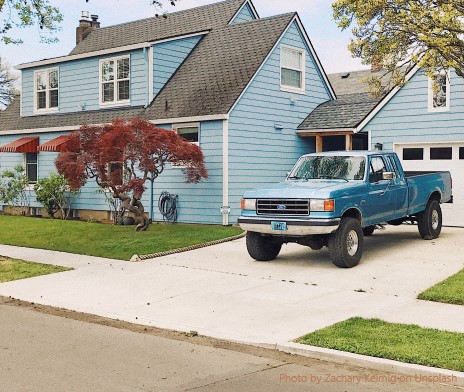The City of Albany’s Building Services team is responsible for ensuring that State Government building regulations, for residential and business, are administered in accordance with the Building Code of Australia, and that relevant town planning requirements and local building laws are adhered to.
Our team assists in protecting the community from major risks to life and property, and in ensuring the sustainability of our built environment.
Planning & other approvals
Development approvals and building permits require separate applications and in some cases you may require both before commencing site works. If required, a development approval is to be issued before you can obtain a building permit.

Things to consider for your development:
- Is your development in a bushfire prone area?
- Do you require development approval?
- Do you require a building/demolition permit?
- Is your lot/building in a heritage-protected place? (Development approval is required)
- Do you want to subdivide or amalgamate lots?
- Does your lot have a drainage easement?
Refer to the following pages for further information:
Bushfire Prone Areas Planning & Development Advertising Signs Building & Demolition Heritage Subdivision & Amalgamation Stormwater and Drainage Where to Start & FAQ’s
Permits
Building Permits
Generally a building permit is required for all structures (residential, commercial or industrial) before any building work can commence. Including, but not limited to:
- New works
- Alterations
- Additions
- Patios
- Sheds
- Transportable buildings
- Swimming pools & spas (above and below ground)
- Safety barriers and fencing for pools/spas
Anyone can apply for a building permit, the owner, builder, designer, building surveyor or any other person. The applicant provides details of the person responsible for the work, i.e. the builder, in the application form.
All Permit Application Forms Lodging an Application
Types of building applications

Different types of building work have different requirements when lodging an application for a building permit. The Building Act 2011 requires a Certificate of Design compliance signed by a registered building surveyor to be obtained before a building permit can be issued. There are two types of permit applications:
Certified Application (BA1 form)
An application is accompanied by a Certificate of Design Compliance (CDC). A private certifier is to issue the CDC.
A certified application is required for Class 1b and Commercial (class 2 to 9) buildings and is optional for Class 1a and 10 buildings and incidental structures.
The City, as permit authority, has 10 business days to decide on a certified application.
Uncertified application (BA2 form)
The application is submitted to the City (permit authority) and the City’s building surveyors will complete the CDC as part of the building permit.
An uncertified application can be submitted for Class 1a and Class 10 buildings and incidental structures.
The City, as permit authority, has 25 business days to decide on an uncertified application.
For more information refer to the Building Commission Permits and Processes Building Classes
For the Building Act, regulations and other legislation refer to our Building Legislation webage.
Other types of permits
Occupancy Permit – must be obtained from the City before a Class 2 to 9 building can be occupied.
Building approval certificate – confirms the building has been assessed by a registered building surveyor for compliance.
Occupancy Permit Strata – to lodge a strata plan for registration or resubdivide a lot in a strata scheme (under the Strata Titles Act)
Building approval certificate Strata – to lodge a strata plan for registration or resubdivide a lot in a strata scheme (under the Strata Titles Act), and the building does not require an occupancy permit.
Demolition permit – required for the demolition, dismantling or removal of a building for incidental structure.
Checklists & Information Sheets
Refer to the City’s planning policies page for policies regarding development, including general, residential, commercial and industrial and special development control areas.
Planning Policies
Request Copies of Plans
To request a copy of building plans:
- complete the following search request form
Building Services: Request for Building Plans
- ensure the owner has signed
- pay applicable fee (see request form)
- email or drop off the request form
Copies of approved building plans are kept in the City of Albany archives. More recent plans are stored electronically.
Dividing Fences
A dividing fence is a ‘sufficient fence’ that separates the land of different owners, whether on the common boundary of adjoining lands or in a line other than the common boundary. When issues with a dividing fence occur it is best to try to approach the owner of the adjoining land, discuss issues, and try to resolve matters together.
Dividing Fences
Scaffolding or Work Near a Street
Application form requesting approval to deposit building material on, erect scaffolding or excavate near a street. Submit with site plan. If footpath or car bays are to be blocked, a Traffic Management Plan is required to be submitted with this application. The fee is $1 per month or part of a month for each m2 of the area of the street enclosed by any hoarding, fence or scaffold.
Application to deposit building material on, erect scaffolding or excavate near a street
Smoke Alarms, Spa’s & Carports
The purpose of this guideline is to provide information regarding smoke alarms, safety barriers and building permits for spas, and clarify that carports require a building permit.
For information on installing a swimming pool or spa, please view the Building Commission website.
Buying / Selling or Moving?
Check out the following fact sheets:
Buying or selling Moving to a rural area
Guidelines for Liveable Housing
The City of Albany Seniors Committee initiated the Liveable Housing Guidelines in October 2012 to provide seniors with helpful information when planning to renovate or build a home. To find out more, please see our Accessible & Inclusive Communities Page.
Liveable Housing Design Guidelines
Sign Licences
See our Advertising Signs webpage for further information. You may require development approval before applying for a sign licence.
Advertising Signs
Crossovers & Verge Vegetation
Vegetation on road verges between the road and adjacent private property boundaries plays an important part in the ecological processes of areas.
Permits are required before undertaking any works within a verge. There are no cost associated with applying for a verge permit.
Fence line clearing
Apply to maintain or construct a new boundary fence that requires vegetation to be cleared on the road verge.
This application must also be used if your boundary fence adjoins a council reserve. A maximum of 1.5 metres may be approved to be cleared inside the verge/ reserve.
Application Form

Verge development
Apply to improve adjoining verge using landscaping or other works.
All improvements must abide by a minimum construction standard and must not interfere with vehicle and pedestrian safety or public utilities.
A condition of this permit is that the applicant (adjoining resident) is responsible for the ongoing maintenance of the verge.
Verge Development Guidelines
Application Form
Waterwise Verge rebate info
Vehicle crossover
Apply to construct a driveway between the roadway and private property.
Crossovers must be built to a minimum construction standard. Council may contribute a subsidy towards the first crossover of a property in the form of cash or concrete drainage pipes.
Crossover application *includes guidelines and specifications
Standard Construction Drawings

Contact Us
Information Officers are available to discuss your development proposals and preliminary plans. Contact us today!
Your queries may be referred to a Planning Officer or Building Surveyor if further information/consultation is required.

If your application is ready to be submitted click below:
Development Application Applications – Building Permits Approval for Advertising (Signs)
